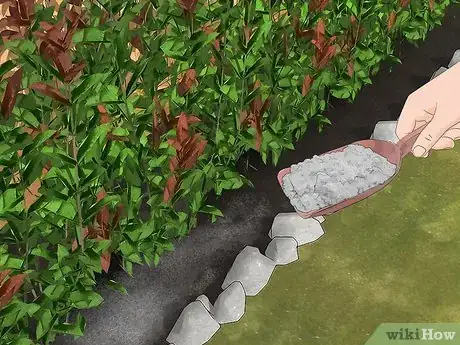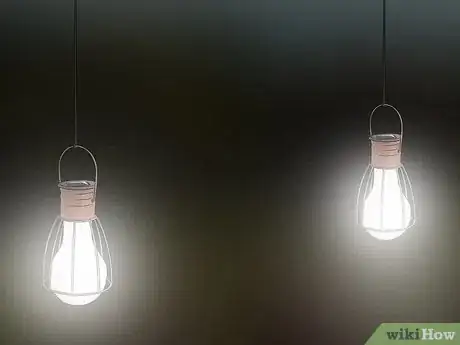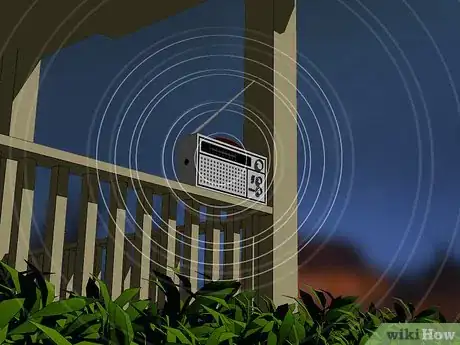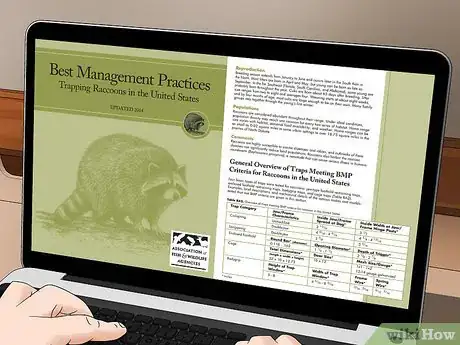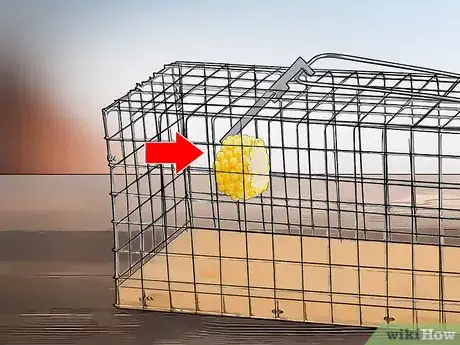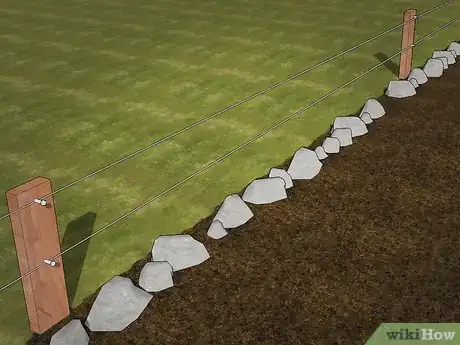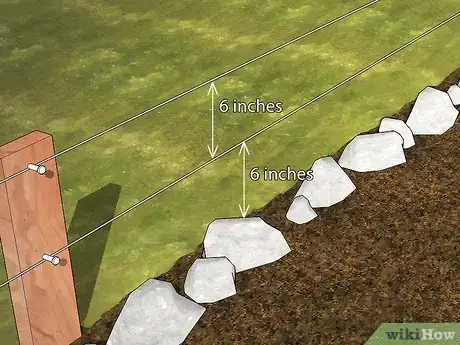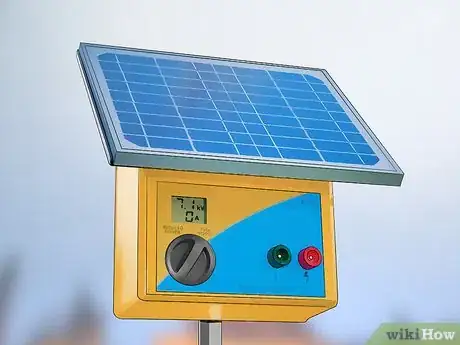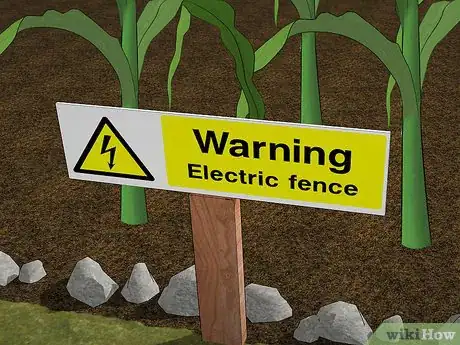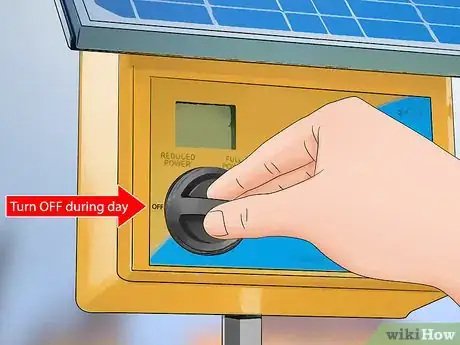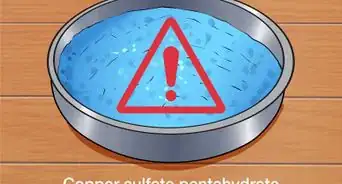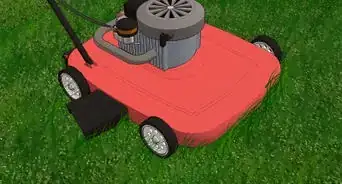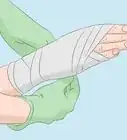This article was co-authored by Hussam Bin Break and by wikiHow staff writer, Jennifer Mueller, JD. Hussam Bin Break is a Certified Commercial Pesticide Applicator and Operations Manager. He and his brother Hussam co-founded Diagno Pest Control in the greater Philadelphia area in 2018, and have since expanded their services to include the New Jersey market. Diagno Pest Control has received Home Advisor's Top Rated and Elite Service Badges for quality of work and customer service.
There are 9 references cited in this article, which can be found at the bottom of the page.
This article has been viewed 56,079 times.
Raccoons are intelligent and agile animals that live throughout North America. They are active at night and are attracted to virtually any food source – including your garden. There are some natural repellents that might work, although they require constant vigilance. The only ways to truly keep raccoons out of your garden are to trap them and release them far away, or to build an electric fence around your garden.[1]
Steps
Trying Natural Repellents
-
1Scatter blood meal or wood ash around your plants. Sprinkling blood meal or wood ash may repel raccoons as well as other nuisance animals, such as groundhogs and skunks. Blood meal is often used as fertilizer and can be found at any farm or garden store. Reapply frequently to maintain the deterrent effect.[2]
- Any wood ash will work, such as the ashes from your fireplace. You may not necessarily be able to buy a quantity of wood ash, but you can save ashes from a fire.
- These deterrents work best if you only have 1 or 2 raccoons passing through the area. Resident raccoons will quickly adapt, or wait for it to rain and wash away the deterrent.
Did You Know? Blood meal and wood ash are also used as fertilizers. In addition to repelling raccoons and other pests, they may actually improve the soil quality in your garden over time.
-
2Spread a mix of garlic and chili powder around your garden. Raccoons have been known to avoid garlic and chili powder. To make this mix, use equal parts of fresh-ground garlic and chili powder. As with blood meal and wood ash, the mix has to be reapplied frequently to work.[3]
- Sprinkle the mix evenly around crops raccoons are attracted to, such as corn. Use enough that you can smell it in the air around the plants.
- If it's recently rained, this mixture may not work. The powder would simply be soaked up by the soil and lose its deterrent effect. Wait until the top layer of the soil is dry before you spread your mixture.
Advertisement -
3Plant squash around your corn and other plants. Squash vines are prickly, and raccoons don't like walking on them. If you plant them around the perimeter of your garden, they may be enough to deter raccoons from going further.[4]
- As with other natural repellants, this works better with raccoons that are just passing through the area. Raccoons who live nearby will adapt and learn how to jump over the squash or enter the garden in some other way.
-
4Use bright lanterns to light up your garden. Raccoons are nocturnal animals, and don't care for lights. If you light up your garden at night, raccoons will likely avoid it. This remedy may not be feasible if you have neighbors close by who would be bothered by the lights, or if your garden is close to your own house.[5]
- Solar-powered lanterns will charge during the day and come on automatically at dusk, so you don't have to worry about a power source.
-
5Play the radio in your garden at night. Raccoons avoid noise, particularly human voices. A talk radio program or rock music with vocals typically works best. The radio needs to be fairly loud, so this method wouldn't work if the noise would disturb you or your neighbors.[6]
- Playing the radio works best in combination with lights. If the raccoons see lights and hear people talking, they will assume that people are there and stay away.
- Other signs of humanity, such as human hair or clothes that smell of human perspiration, may also work.
Setting Cage Traps
-
1Check state and local laws regarding humane cage traps. Fish and wildlife agencies have rules regarding the trapping and taking of wildlife from your area. You will likely need a hunting permit if you want to kill the raccoons, even on your own private property. You typically don't need a license to use humane cage traps, but you may need a permit to release the animals you trap.[7]
- Some areas do not allow people to release animals they've trapped themselves. Rather, you must contact animal services to have a professional remove the animal for you. This is more common if you live within the city limits.[8]
- Even when using humane traps, you are still required to follow state laws and local ordinances regarding the trapping of wildlife.
Did You Know? If you fail to follow state and local trapping laws and kill or injure any raccoons as a result, you could be prosecuted for animal cruelty.
-
2Acquire a humane live trap. Some state or local animal services agencies have traps that you can rent to trap raccoons on your property. You may also be able to borrow a trap from an agricultural extension nearby.
- If you have frequent or repeated problems with raccoons in your garden, it may be worth the investment to go ahead and buy your own traps so you can use them repeatedly. You can purchase humane live traps online, or at hunting or farming stores.
Tip: If you've actually seen the raccoons, you'll know better what size trap to get. If you get a trap that's too small, the raccoon will be able to take the bait and leave without getting caught.
-
3Place food bait at the back of the trap behind the trip plate. Use food bait to lure the raccoon into the trap. When the raccoon goes after the food, it crosses the trip plate. The weight of its paw on the plate causes the door to shut behind the animal.
- Raccoons are omnivores and will eat nearly anything. If the raccoon you're trying to trap is going after something in particular, such as your corn, you might try using that as bait.
-
4Report the trapped animal for removal. In many areas, once you've trapped a raccoon on your property, you must contact animal services to have a professional remove the animal. Check with your local animal services office to find out when an officer is available to come and pick up the animal.[9]
- Typically, you'll need to leave the trap in an area where the animal services officer can easily get it. You may not be home when the officer arrives.
- If the raccoon will be in the cage for several hours, provide the animal with some food or water.
-
5Hire wildlife removal specialists to trap the creatures. If you live close to a city or urban area, there may be numerous private companies that specialize in the humane trapping and removal of pest species, such as raccoons, from your property. While these specialists will be more expensive than doing it yourself, you can be assured that the job is done correctly.[10]
- If the option is available, you may want to contact 2 or 3 companies and explain your problem. Find out their plan for removing the animals and a basic time frame for when they can get the job done. Then you can compare several estimates.
- Research the reputation of any company thoroughly before you hire them. You can look up reviews from customers online. If the company is regulated by a government agency, find out if their license is current or if they've had any complaints.
Fencing Your Garden
-
1Have your fencing in place before you plant your garden. To be truly effective, your garden should be fenced before you even plant your seeds or transplant seedlings. Once raccoons have identified a food source, they'll return to it.[11]
- Raccoons can figure out how to get over or through a fence fairly easily. They are more likely to be deterred by a fence if they don't know there is good food beyond it.
-
2Stake an electric fence with 2 wires around your garden. A single wire electric fence may be sufficient, but a double-wire fence is best for keeping out raccoons. Set the first wire about 6 inches (15 cm) off the ground, and the second about 1 foot (0.30 m) off the ground. Attach the wires to vertical stakes about 6 inches (15 cm) apart, to keep the wires from sagging too much.[12]
- Make sure the fence stakes are far enough into the ground that they won't fall over easily, particularly if it rains. A depth of 4 to 6 inches (10 to 15 cm) should be sufficient, depending on the density of your soil.
-
3Use a solar-powered charger to power your wires. You don't want the wires to carry enough voltage to kill or seriously injure the raccoons, just deter them. You can buy a solar or battery-powered electric fence charger online or at a farm supply store.[13]
- Don't hook the electric fence up to your home current – it's much stronger than you need and will turn your electric fence into a serious danger.[14]
Tip: There are many types of chargers, but the solar-powered ones tend to be more economical and environmentally friendly. Even a small solar cell can power your fence for several days.
-
4Post warning signs around your fence. Even though your electric fence won't be very high-powered, it's still a good idea to warn people that it exists. In some areas, local ordinances require specific warning signs for electric fences, even on private property.[15]
- Put up at least one sign for every 4 feet (1.2 m) of fencing. Make sure the signs are clearly visible from several angles.
-
5Turn the power off during the day. Since raccoons are only active at night, leaving an electric fence on all day would be a waste. Instead, turn the fence on at dusk, then turn it back off in the morning. This also makes accidents less likely to occur.[16]
- Some charging systems allow you to place your fence on an automatic timer. That way, you won't have to worry about going out to your garden to turn the fence on and off every day.
References
- ↑ https://www.dec.ny.gov/docs/wildlife_pdf/trapbmpsraccoon.pdf
- ↑ https://davesgarden.com/guides/articles/keeping-raccoons-away-from-your-garden
- ↑ https://www.almanac.com/pest/raccoons
- ↑ https://www.almanac.com/pest/raccoons
- ↑ https://www.almanac.com/pest/raccoons
- ↑ https://www.humanesociety.org/resources/raccoons-raiding-your-garden-or-garbage
- ↑ https://www.dec.ny.gov/docs/wildlife_pdf/trapbmpsraccoon.pdf
- ↑ https://www.cityofirving.org/DocumentCenter/View/30101/Animal-Services-Trap-Agreement?bidId=
- ↑ https://www.cityofirving.org/DocumentCenter/View/30101/Animal-Services-Trap-Agreement?bidId=
- ↑ https://www.gardensalive.com/product/resisting-rascally-raccoons
- ↑ https://www.countryliving.com/gardening/garden-ideas/g4144/protect-your-garden-from-critters/
- ↑ https://www.gardensalive.com/product/resisting-rascally-raccoons
- ↑ https://wildlifehelp.org/solution/virginia/raccoon/how-keep-raccoons-damaging-my-garden/116
- ↑ https://www.gardensalive.com/product/resisting-rascally-raccoons
- ↑ https://wildlifehelp.org/solution/virginia/raccoon/how-keep-raccoons-damaging-my-garden/116
- ↑ https://www.gardensalive.com/product/resisting-rascally-raccoons
- ↑ https://www.almanac.com/pest/raccoons
- ↑ Hussam Bin Break. Pest Control Professional. Expert Interview. 28 June 2019.
- ↑ https://www.almanac.com/pest/raccoons
